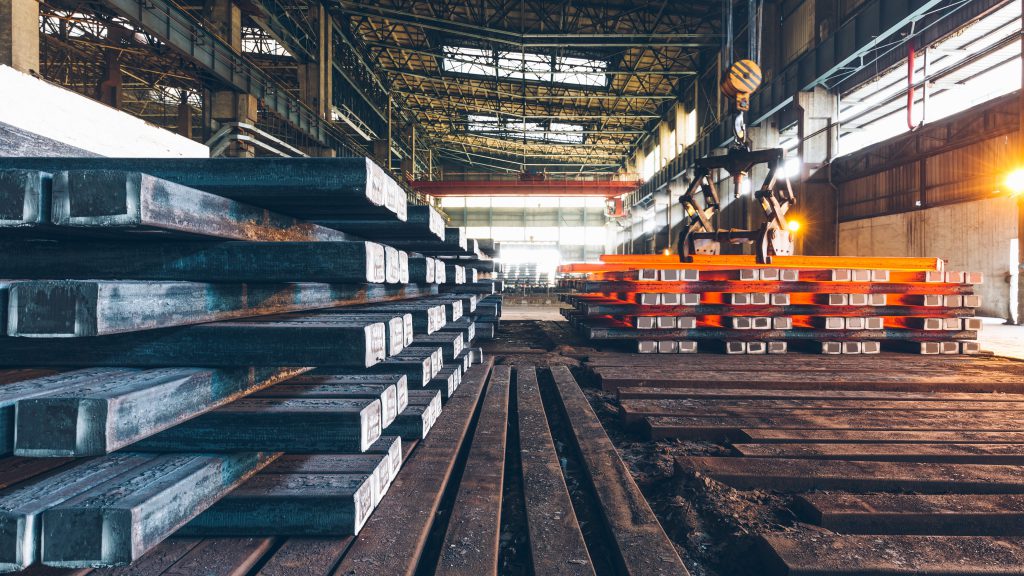
(The opinions expressed here are those of Clyde Russell, a columnist for Reuters.)
China has moved to cool its red-hot steel sector by discouraging exports and boosting imports of some feedstock alternatives to buoyant iron ore, steps largely viewed as short-term measures to calm prices.
But there are likely some longer-term implications as well, as Beijing looks at ways to reduce the reliance of the world’s biggest steel producer on Australian iron ore.
Australia is the world’s largest exporter of the steel-making ingredient and meets about two-thirds of China’s import needs, a situation that is likely uncomfortable for Beijing given the ongoing political and trade tensions with Canberra.
China’s finance ministry announced on April 28 that it will remove export tax rebates for 146 steel products from May 1, while waiving import tariffs for some products, including pig iron, crude steel, recycled steel raw materials and ferrochrome.
The end of the export tax rebates may affect about 33.35 million tonnes of steel exports a year, according to Tang Chuanlin, an analyst with CITIC Securities.
This is significant as China exported 53.67 million tonnes of steel products in 2020, and in the first quarter of this year it shipped out 17.68 million, up 23.8% from the same period a year earlier.
If the removal of the export rebates renders Chinese steel products uncompetitive in regional markets, it may result in mills reducing output as they will be reluctant to oversupply the domestic market and thus drive down prices and profit margins.
At the same time as the authorities moved to restrict exports, they made it cheaper to import some steel feedstocks, which may serve as a substitute for iron ore.
While pig iron and recycled and scrap steel aren’t direct substitutes for iron ore, they can be used to make steel using electric arc furnaces.
This means more steel could be produced from feedstock other than iron ore, with the added advantage of being less polluting, given that electric arc furnaces don’t use coking coal as an energy source.
Overall, it appears that the authorities are trying to tackle the problems of high domestic steel prices, strong imported iron ore prices, and the level of pollution created by producing steel in one fell swoop.
The price of steel rebar on the Shanghai Futures Exchange hit a record high on April 30, reaching 5,487 yuan ($848) a tonne, the strongest since trading began in 2009.
Spot iron ore for delivery to north China, as assessed by commodity price reporting agency Argus, reached $193.50 a tonne on April 27, eclipsing its previous high reached in 2011.

While the Chinese government will be keen to see both domestic steel and iron ore prices moderate in the short term, they are also likely to be concerned about the longer-term reliance of the steel sector on Australia.
Beijing and Canberra have been at loggerheads for more than a year over a variety of political issues, but the fallout has been concentrated in trade, with China imposing tariffs or informal bans on a variety of commodities, including barley, coal, copper ores, wine and meat.
While these actions have had a negative impact on Australian exporters of these commodities, the overall trade relationship is still tilted in Canberra favour, given China’s reliance on Australian iron ore to feed its steel sector, which is in turn one of the most vital components of growth in the world’s second-largest economy.
Australia’s overall exports to China were worth A$13.42 billion ($10.37 billion) in March, up 17% from February and the third-highest monthly total, according to official data.
So far Beijing has been careful to keep iron ore out of its rhetoric and actions against Canberra, but the key ingredient for steel is now something of the elephant in the room.
Trimming China’s overall steel output by crimping exports, while boosting the supply and price of alternative feedstocks will only have a marginal impact on the quantity of iron ore China needs to import.
A longer-term strategy of securing other sources of iron ore is also underway, with Chinese companies involved in developing the Simandou project in the west African nation of Guinea, often said to be one of the last, and best, undeveloped iron ore projects.
However, while the reserve at Simandou is world class and easy to mine, the logistics of getting the ore to the coast are challenging and therefore expensive to overcome.
This cost challenge, coupled with the potential for political instability in Guinea, has seen major miners such as Rio Tinto be cautious about developing Simandou.
However, China seems to be willing to take risks and accept the likelihood that Simandou may never deliver strong returns on its potential $15 billion price tag.
That’s a strong signal that cutting dependence on Australian iron ore is a Chinese priority.
(Editing by Muralikumar Anantharaman)
Comments